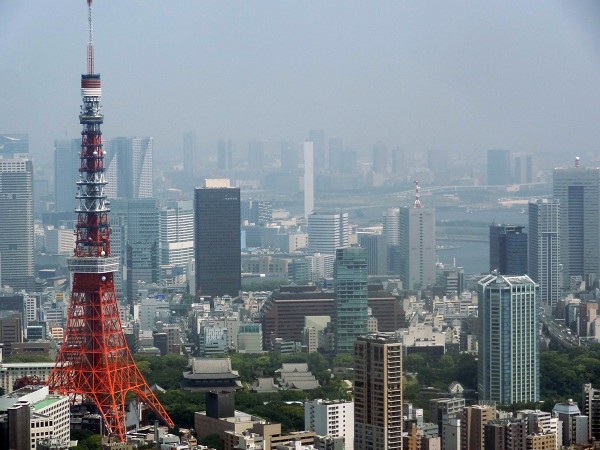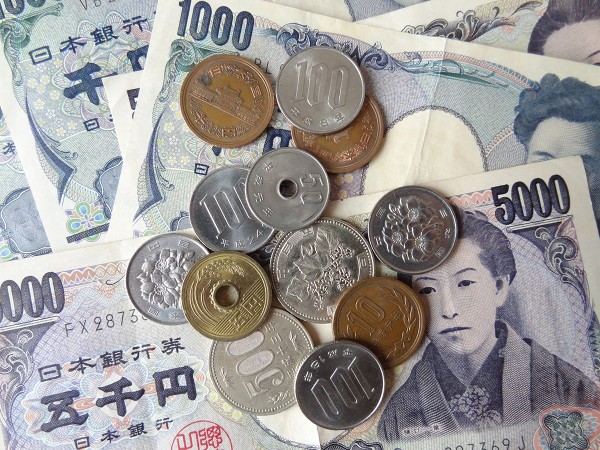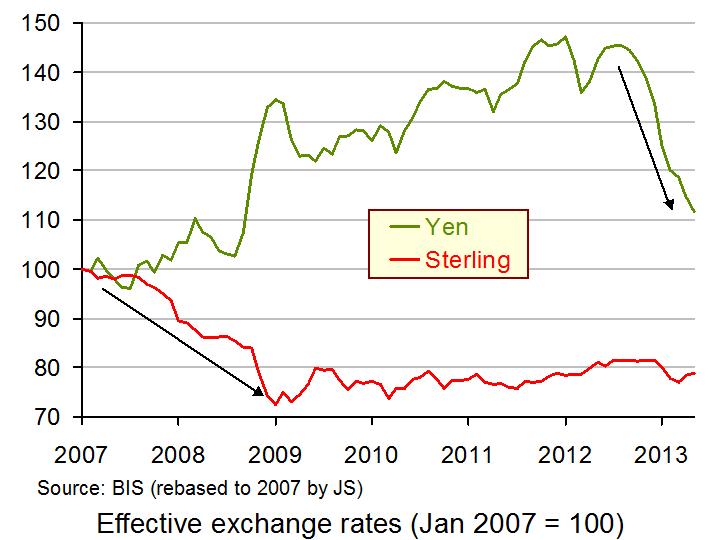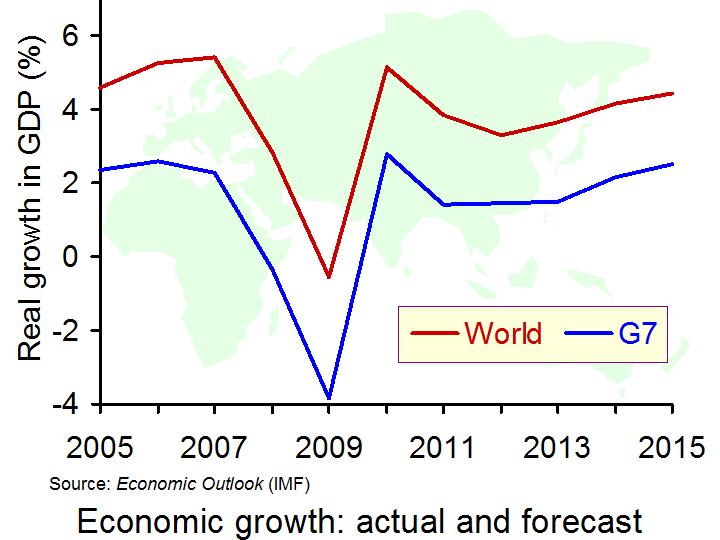 Since coming to office in December 2012, Shinzo Abe’s government has been determined to revive the Japanese economy. For the past 20 years, Japan’s growth has averaged only 0.8% per annum. This compares with 1.3% for Germany, 2.3% for the UK, 2.6% for the USA, 4.9% for South Korea and 10.4% for China.
Since coming to office in December 2012, Shinzo Abe’s government has been determined to revive the Japanese economy. For the past 20 years, Japan’s growth has averaged only 0.8% per annum. This compares with 1.3% for Germany, 2.3% for the UK, 2.6% for the USA, 4.9% for South Korea and 10.4% for China.
Japanese real GDP per capita was only 14.5% higher in 2012 than 20 years earlier. This compares with figures for Germany, the UK, the USA, South Korea and China of 27%, 45%, 34%, 126% and 497% respectively.
So what has the Japanese government done to boost both short-term and long-term growth after years of stagnation? There are ‘three arrows’ to the policy, targeted at reviving and sustaining economic growth.
 The first arrow is monetary policy. The Bank of Japan has engaged in extensive quantitative easing through bond purchases in order to drive down the exchange rate (see A J-curve for Japan?), stimulate expenditure and increase the rate of inflation. A target inflation rate of 2% has been set by the Bank of Japan. Part of the problem for the Japanese economy over the years has been stagnant or falling prices. Japanese consumers have got used to waiting to spend in the hope of being able to buy at lower prices. Similarly, Japanese businesses have often delayed stock purchase. By committing to bond purchases of whatever amount is necessary to achieve the 2% inflation target, the central bank hopes to break this cycle and encourage people to buy now rather than later.
The first arrow is monetary policy. The Bank of Japan has engaged in extensive quantitative easing through bond purchases in order to drive down the exchange rate (see A J-curve for Japan?), stimulate expenditure and increase the rate of inflation. A target inflation rate of 2% has been set by the Bank of Japan. Part of the problem for the Japanese economy over the years has been stagnant or falling prices. Japanese consumers have got used to waiting to spend in the hope of being able to buy at lower prices. Similarly, Japanese businesses have often delayed stock purchase. By committing to bond purchases of whatever amount is necessary to achieve the 2% inflation target, the central bank hopes to break this cycle and encourage people to buy now rather than later.
 The second arrow is fiscal policy. Despite having the highest debt to GDP ratio in the developed world, Japan is embarking on a large-scale programme of infrastructure investment and other public works. The package is worth over $100bn. The expansionary fiscal policy is accompanied by a longer-term plan for fiscal consolidation as economic growth picks up. In the short term, Japan should have no difficulty in financing the higher deficit, given that most of the borrowing is internal and denominated in yen.
The second arrow is fiscal policy. Despite having the highest debt to GDP ratio in the developed world, Japan is embarking on a large-scale programme of infrastructure investment and other public works. The package is worth over $100bn. The expansionary fiscal policy is accompanied by a longer-term plan for fiscal consolidation as economic growth picks up. In the short term, Japan should have no difficulty in financing the higher deficit, given that most of the borrowing is internal and denominated in yen.
 The third arrow is supply-side policy. On 5 June, Shinzo Abe unveiled a series of goals his government would like to achieve in order to boost capacity and productivity. These include increasing private-sector investment (both domestic and inward), infrastructure expenditure (both private and public), increasing farmland, encouraging more women to work by improving day-care facilities for children, and deregulation of both goods, capital and labour markets. The prime minister, however, did not give details of the measures that would be introduced to achieve these objectives. More details will be announced in mid-June.
The third arrow is supply-side policy. On 5 June, Shinzo Abe unveiled a series of goals his government would like to achieve in order to boost capacity and productivity. These include increasing private-sector investment (both domestic and inward), infrastructure expenditure (both private and public), increasing farmland, encouraging more women to work by improving day-care facilities for children, and deregulation of both goods, capital and labour markets. The prime minister, however, did not give details of the measures that would be introduced to achieve these objectives. More details will be announced in mid-June.
The following videos and articles look at the three arrows of Abenomics and the effects they are having on confidence and attitudes as well as on expenditure, output and the exchange rate. They also look at the crucial third arrow: at whether supply-side reforms will be enough to achieve a sustained increase in economic growth.
Videos
 Abenomics an uncertain future for most Financial Times on YouTube, Ben McLannahan (30/5/13)
Abenomics an uncertain future for most Financial Times on YouTube, Ben McLannahan (30/5/13)
 Assessing Abenomics NHK World (3/6/13)
Assessing Abenomics NHK World (3/6/13)
 Adam Posen on Abenomics NHK World (30/5/13)
Adam Posen on Abenomics NHK World (30/5/13)
 Japanese concerned over ‘Abenomics’ AlJazeera on YouTube (30/5/13)
Japanese concerned over ‘Abenomics’ AlJazeera on YouTube (30/5/13)
 Abenomics – the cure for deflation? BBC News, Rupert Wingfield-Hayes (10/5/13)
Abenomics – the cure for deflation? BBC News, Rupert Wingfield-Hayes (10/5/13)
 Japan PM’s economic speech ‘short on detail’ BBC News, Rupert Wingfield Hayes (5/6/13)
Japan PM’s economic speech ‘short on detail’ BBC News, Rupert Wingfield Hayes (5/6/13)
 Pretty Positive on Abenomics Bloomberg, Jan Hatzius, Goldman Sachs (5/6/13)
Pretty Positive on Abenomics Bloomberg, Jan Hatzius, Goldman Sachs (5/6/13)
 Why Abenomics is Bonkers: Pro CNBC, Graeme Maxton, (27/5/13)
Why Abenomics is Bonkers: Pro CNBC, Graeme Maxton, (27/5/13)
 ‘Abe’nomics Not About BOJ Printing Money Bloomberg, Derek Halpenny (31/5/13)
‘Abe’nomics Not About BOJ Printing Money Bloomberg, Derek Halpenny (31/5/13)
 Abenomics Aims `Third Arrow’ at Business Rules Bloomberg, Willie Pesek (5/6/13)
Abenomics Aims `Third Arrow’ at Business Rules Bloomberg, Willie Pesek (5/6/13)
 Analysis on Abe’s Growth Plan NHK World (5/6/13)
Analysis on Abe’s Growth Plan NHK World (5/6/13)
Articles
Will three arrows find their target? On Line Opinion, Andrew Leigh (6/6/13)
Japan Fires ‘Third Arrow,’ but Will It Work? CNBC, Dhara Ranasinghe (5/6/13)
Japan’s ‘3 Arrows’ May Run Into German Wall CNBC, Michael Ivanovitch (19/5/13)
Japan’s recovery – the power of Abe’s three arrows Commonwealth Bank, Australia, Melanie Timbrell (31/5/13)
So Far, the Battery Charger Is Working in Japan The New York Times, Jeff Sommer (18/5/13)
Abenomics Could Light A Fire Under The Japan Trade Again Business Insider, Matthew Boesler (4/6/13)
Japan’s New Prime Minister Unveils The ‘Most Important’ Plank Of Abenomics Business Insider (5/6/13)
Japan PM pledges to boost incomes by 30% Channel NewsAsia (5/6/13)
Abe’s growth strategy disappoints economists, investors The Asahi Shimbun (6/6/13)
Abenomics Won’t Be ’Magic Bullet’ for Japan, Says Johnson of MIT Bloomberg, Cordell Eddings (5/6/13)
Too soon to call time on Abenomics BBC News, Stephanie Flanders (19/6/13)
Abenomics: The objectives and the risks BBC News, Puneet Pal Singh (19/7/13)
Data
World Economic Outlook Database IMF
Bank of Japan Statistics Bank of Japan
Economic Outlook Annex Tables OECD
Country statistical profile: Japan 2013 OECD
Questions
- Demonstrate on (a) an aggregate demand and supply diagram and (b) a Keynesian 45° line diagram the effects of the three arrows (assuming they are successful) in meeting their objectives.
- What will determine the effectiveness of the first two arrows in boosting short-term economic growth?
- Would you characterise the policies of the third arrow as interventionist or market-orientated, or as a mixture? Explain.
- What are the dangers in ‘Abenomics’?
- Find out what has been happening to Japanese bond rates. What are the implications of this for monetary policy?
- What are the ‘markets telling Abe’?
- In what ways will expectations influence the effectiveness of Abenomics?
 The new Japanese government under Shinzo Abe, which took office on 26 December 2012, has been pursuing a policy of weakening the yen. Using a combination of low interest rates, quantitative easing, expansionary fiscal policy and a declared aim of depreciation, the government has succeeded in driving down the value of the yen.
The new Japanese government under Shinzo Abe, which took office on 26 December 2012, has been pursuing a policy of weakening the yen. Using a combination of low interest rates, quantitative easing, expansionary fiscal policy and a declared aim of depreciation, the government has succeeded in driving down the value of the yen.
Since mid-November last year, the yen has depreciated by 28% against the dollar, 30% against the euro and 21% against sterling. The effective exchange rate index has fallen by 22% (see first diagram below: click here for a PowerPoint of the diagram).
 But will this depreciation succeed in stimulating the Japanese economy and will it improve the balance of trade? The hope is that the falling yen will boost export sales by making them cheaper abroad, and will reduce the demand for imports by making them more expensive in Japan. The balance of trade will thereby improve and higher exports (an injection) and lower imports (a withdrawal) will stimulate aggregate demand and economic growth.
But will this depreciation succeed in stimulating the Japanese economy and will it improve the balance of trade? The hope is that the falling yen will boost export sales by making them cheaper abroad, and will reduce the demand for imports by making them more expensive in Japan. The balance of trade will thereby improve and higher exports (an injection) and lower imports (a withdrawal) will stimulate aggregate demand and economic growth.
Traditionally Japan has run balance of trade surpluses, but since July 2012, it has been running monthly deficits – the longest run of deficits since 1980. But depreciation cannot be expected to turn this position around immediately. Indeed, theory suggests that the balance of trade is likely to deteriorate before it improves. This is known as the J-curve effect and is illustrated in the second diagram below. As page 768 of Economics, 8th edition states:
 At first a devaluation or depreciation might make a current account deficit worse: the J-curve effect. The price elasticities of demand for imports and exports may be low in the short run (see Case Study 25.1 in MyEconLab). Directly after devaluation or depreciation, few extra exports may be sold, and more will have to be paid for imports that do not have immediate substitutes. There is thus an initial deterioration in the balance of trade before it eventually improves. In Figure 25.12 [the second diagram], devaluation takes place at time t1. As you can see, the diagram has a J shape.
At first a devaluation or depreciation might make a current account deficit worse: the J-curve effect. The price elasticities of demand for imports and exports may be low in the short run (see Case Study 25.1 in MyEconLab). Directly after devaluation or depreciation, few extra exports may be sold, and more will have to be paid for imports that do not have immediate substitutes. There is thus an initial deterioration in the balance of trade before it eventually improves. In Figure 25.12 [the second diagram], devaluation takes place at time t1. As you can see, the diagram has a J shape.
Evidence suggests that the first part of the ‘J’ has been experienced in Japan: Japan’s balance of trade has deteriorated. But there is debate over whether the balance of trade will now start to improve. As the article by James Saft states:
But a look at the actual data shows Japanese companies, like British ones during a similar bout of currency weakness in 2008, appear to be more eager to use a newly competitive currency to pad profits through higher margins rather than higher export volumes. Thus far, Japanese exporters appear to be doing just that. Despite yen falls the price of Japanese exports in local currency has barely budged.
“Japanese companies have not actually cut the foreign currency prices of their exports. Just as with the UK exporters, the Japanese have chosen to hold foreign prices constant, maintain market share, and increase the yen value and thus the yen profit associated with yen depreciation,” UBS economist Paul Donovan writes in a note to clients.
 The extra profits earned by Japanese companies from export sales may be stockpiled or paid out in dividends rather than reinvested. And what investment does take place may be abroad rather than in Japan. The net effect may be very little stimulus to the Japanese economy.
The extra profits earned by Japanese companies from export sales may be stockpiled or paid out in dividends rather than reinvested. And what investment does take place may be abroad rather than in Japan. The net effect may be very little stimulus to the Japanese economy.
As stated by Saft above, the UK had a similar experience in the period 2007–9, when sterling depreciated some 27% (see the second diagram). The balance of trade improved very little and UK companies generally priced goods to markets abroad rather than cutting overseas prices.
But times were different then. The world was plunging into recession. Now global markets are mildly growing or static. Nevertheless, there is a danger that the upward slope of the J-curve in Japan may be pretty flat.
Articles
Weak yen a boon for investors, not Japan Reuters, James Saft (14/5/13)
Japan’s Trade Data Suggest Even Lower Yen Needed Wall Street Journal, Nick Hastings (22/5/13)
2 Misunderstandings About Japanese Trade Seeking Alpha, Marc Chandler (22/5/13)
Japanese trade deficit widens Financial Times, Ben McLannahan (22/5/13)
Data
BIS effective exchange rate indices Bank for International Settlements
Japan’s balance of trade Trading Economics
UK Trade, March 2013 ONS
Questions
- Explain the J-curve effect.
- Why is there some doubt about whether the Japanese balance of trade will improve significantly?
- What will be the consequences for Japanese growth?
- If foreign currency prices of Japanese exports do not change, what will determine the amount that Japan exports?
- What other measures is the Japanese government taking to stimulate the economy? What will determine the size of the multiplier effects of these measures?
- Using data from the ONS plot the UK’s quarterly balance of trade figures from 2007 to the present day. Explain the pattern that emerges.
 What lies ahead for economic growth in 2013 and beyond? And what policies should governments adopt to aid recovery? These are questions examined in four very different articles from The Guardian.
What lies ahead for economic growth in 2013 and beyond? And what policies should governments adopt to aid recovery? These are questions examined in four very different articles from The Guardian.
The first is by Nouriel Roubini, Professor of Economics at New York University’s Stern School of Business. He was one of the few economists to predict the collapse of the housing market in the USA in 2007 and the credit crunch and global recession that followed. He argues that continuing attempts by banks, governments and individuals to reduce debt and leverage will mean that the advanced economies will struggle to achieve an average rate of economic growth of 1%. He also identifies a number of other risks to the global economy.
 In contrast to Roubini, who predicts that ‘stagnation and outright recession – exacerbated by front-loaded fiscal austerity, a strong euro and an ongoing credit crunch – remain Europe’s norm’, Christine Lagarde, head of the IMF and former French Finance Minister, predicts that the eurozone will return to growth. ‘It’s clearly the case’, she says, ‘that investors are returning to the eurozone, and resuming confidence in that market.’ Her views are echoed by world leaders meeting at the World Economic Forum in Davos, Switzerland, who are generally optimistic about prospects for economic recovery in the eurozone.
In contrast to Roubini, who predicts that ‘stagnation and outright recession – exacerbated by front-loaded fiscal austerity, a strong euro and an ongoing credit crunch – remain Europe’s norm’, Christine Lagarde, head of the IMF and former French Finance Minister, predicts that the eurozone will return to growth. ‘It’s clearly the case’, she says, ‘that investors are returning to the eurozone, and resuming confidence in that market.’ Her views are echoed by world leaders meeting at the World Economic Forum in Davos, Switzerland, who are generally optimistic about prospects for economic recovery in the eurozone.
The third article, by Aditya Chakrabortty, economics leader writer for The Guardian, looks at the policies advocated at the end of World War II by the Polish economist, Michael Kalecki and argues that such policies are relevant today. Rather than responding to high deficits and debt by adopting tough fiscal austerity measures, governments should adopt expansionary fiscal policy, targeted at expanding infrastructure and increasing capacity in the economy. That would have an expansionary effect on both aggregate demand and aggregate supply. Sticking with austerity will result in continuing recession and the ‘the transfer of wealth and power into ever fewer hands.’
 But while in the UK and the eurozone austerity policies are taking hold, the new government in Japan is adopting a sharply expansionary mix of fiscal and monetary policies – much as Kalecki would have advocated. The Bank of Japan will engage in large-scale quantitative easing, which will become an open-ended commitment in 2014, and is raising its inflation target from 1% to 2%. Meanwhile the Japanese government has decided to raise government spending on infrastructure and other government projects.
But while in the UK and the eurozone austerity policies are taking hold, the new government in Japan is adopting a sharply expansionary mix of fiscal and monetary policies – much as Kalecki would have advocated. The Bank of Japan will engage in large-scale quantitative easing, which will become an open-ended commitment in 2014, and is raising its inflation target from 1% to 2%. Meanwhile the Japanese government has decided to raise government spending on infrastructure and other government projects.
So – a range of analyses and policies for you to think about!
Risks lie ahead for the global economy The Guardian, Nouriel Roubini (21/1/13)
Eurozone showing signs of recovery, says IMF chief The Guardian, Graeme Wearden (14/1/13)
Austerity? Call it class war – and heed this 1944 warning from a Polish economist The Guardian, Aditya Chakrabortty (14/1/13)
Bank of Japan bows to pressure with ‘epoch-making’ financial stimulus The Guardian, Phillip Inman (22/1/13)
Questions
- What are the dangers facing the global economy in 2013?
- Make out a case for sticking with fiscal austerity measures.
- Make out a case for adopting expansionary fiscal policies alongside even more expansionary monetary policies.
- Is is possible for banks to increase their capital-asset and liquidity ratios, while at the same time increasing lending to business and individuals? Explain.
- What are the implications of attempts to reduce public-sector deficits and debt on the distribution of income? Would it be possible to devise austerity policies that did not have the effect you have identified?
- What will be the effect of the Japanese policies on the exchange rate of the yen with other currencies? Will this be beneficial for the Japanese economy?
 While the Western world has struggled with economic growth for the past 6 years, emerging economies such as China, Brazil and India have recorded some very high rates of growth. Throughout 2012, there were signs that these economies were not going to be the saviour of the global economy that we all thought. But, as we enter 2013, is it these economies that still hold the hope of the West for more positive figures and better economic times?
While the Western world has struggled with economic growth for the past 6 years, emerging economies such as China, Brazil and India have recorded some very high rates of growth. Throughout 2012, there were signs that these economies were not going to be the saviour of the global economy that we all thought. But, as we enter 2013, is it these economies that still hold the hope of the West for more positive figures and better economic times?
The article below from BBC News, in particular, considers the year ahead for the Asian economies and what it might mean for the Western world. Although these countries are by no means safeguarded against the impending approach of the US economy to their fiscal cliff or the ongoing eurozone crisis, they have seemed to be more insulated than the rest of the world. A crucial question to consider is whether this will continue. Furthermore, are the growth levels and policies of a country such as China sustainable? Can it continue to record such high growth rates in the face of the global economic situation?
The Japanese economy has been in serious trouble for a couple of decades, but measures to boost growth for this economy are expected. If these do occur, then western economies may feel some of their positive effects. At present, there is a degree of optimism as we enter the New Year, but how long this will last is anybody’s guess. The following articles consider the year ahead.
Asian economies face regional and global challenges BBC News (1/1/13)
Asia faces hard road ahead China Daily, Haruhiko Kuroda and Changyong Rhee (31/12/12)
Asia to continue rise despite US fiscal cliff Economic Times, Sugata Ghosh (1/1/13)
‘3.6% growth’ for global economy next year China Daily, Alvin Foo (28/12/12)
Asian economies surge ahead despite global slowdown Coast Week, Ding Qilin and Hu Junxin (4/1/13)
Global grind The Economist, Robin Bew (21/11/12)
Questions
- Why have the Asian economies been more insulated to the global economic conditions over the past few years, in comparison with the Western world?
- What challenges will the global economy be facing over the coming year?
- What challenges are the Asian economies facing? How different are they from the challenges you identified in question 3?
- Why is the rate of exchange an important factor for an economy such as Japan?
- What does a low exchange rate for the yen mean for European countries? Is it likely to be seen as a good or bad thing? What about for South Korea? Use a diagram to help you answer this question.
- Why is the economic situation in countries such as China and India so important for the rest of the global economy? Use a diagram to illustrate this.
 Japan’s general election on 16 December was won by the centre-right Liberal Democratic Party (LDP), led by Shinzo Abe. It gained a two-thirds majority in the lower house. It returns to power after losing to the Democratic Party in 2009. Previously it had been in office for most of the time since 1955.
Japan’s general election on 16 December was won by the centre-right Liberal Democratic Party (LDP), led by Shinzo Abe. It gained a two-thirds majority in the lower house. It returns to power after losing to the Democratic Party in 2009. Previously it had been in office for most of the time since 1955.
The LDP has promised to revive the flagging Japanese economy, which has been suffering from years of little or no growth and returned to recession last quarter. Economic confidence has been damaged by a dispute with China about the sovereignty over some small islands in the East China Sea. The economy, whose exports make up some 13% of GDP, has suffered from the global slowdown and a high yen. The yen has appreciated against the dollar by around 40% since 2007.
The economy has also suffered from the shutdown of all its nuclear reactors following the earthquake and tsunami last year. Nuclear power accounted for over 30% of the country’s electricity generation.
 Mr Abe promises to revive the economy through fiscal and monetary policies. He plans a fiscal stimulus package in early 2013, with increased government expenditure on infrastructure and other public-works. He also wants the Bank of Japan to increase its inflation target from 1% to 3% and to achieve this through various forms of monetary easing.
Mr Abe promises to revive the economy through fiscal and monetary policies. He plans a fiscal stimulus package in early 2013, with increased government expenditure on infrastructure and other public-works. He also wants the Bank of Japan to increase its inflation target from 1% to 3% and to achieve this through various forms of monetary easing.
The initial reactions of markets to the election result were favourable. The stock market rose and the yen fell.
However, as the following articles discuss, there are dangers associated with Mr Abe’s policies. The expansionary fiscal policy will lead to a rise in the country’s general-government debt, which, at some 240% of GDP, is by far the largest in the developed world. This could lead to a loss of confidence in Japanese debt and a fall in the price of bonds on the secondary markets and a rise in government borrowing costs. Also, a depreciation of the yen, while welcomed by exporters, would increase the price of imports, including food and raw materials.
Changing of guard in Japan as PM concedes vote CNN, Yoko Wakatsuki, Brian Walker, and Hilary Whiteman (17/12/12)
LDP Win Clears Pipes for Japan Fiscal Spigot Bloomberg Businessweek, Toru Fujioka (17/12/12)
Economic implications of Japan’s election Huffington Post (16/12/12)
Japan economy contracts again Taipei Times (11/12/12)
Japan elections: Shares rise and yen weakens on Abe win BBC News (17/12/12)
Shinzo Abe’s challenges in reviving Japan’s economy BBC News, Puneet Pal Singh (17/12/12)
Can Shinzo Abe Save Japan? Slate, Matthew Yglesias (30/11/12)
Deflation only natural when politicians refuse to fix oversupplied Japan Japan Times, Teruhiko Mano (17/12/12)
New Year messages from Japan BBC News, Stephanie Flanders (18/12/12)
Japan – Muddling On Or Growing Stronger? Seeking Alpha, Anthony Harrington (12/12/12)
Japanese government unveils £138bn stimulus package The Guardian (11/1/13)
Questions
- Using macroeconomic data from sources such as sites 6, 7 and 9 in the Economics Network’s Economic Data freely available online, describe Japan’s macroeconomic situation over the past 10 years.
- Why has the Japanese yen appreciated so much in recent years?
- What forms could monetary easing take in Japan?
- Why might it prove difficult to stimulate the Japanese economy through fiscal and monetary policies?
- What undesirable side-effects might result from expansionary fiscal and monetary policies?
- What structural weaknesses are there in the Japanese economy that have hindered economic growth? What policies might the new Japanese government pursue in tackling these structural weaknesses?
 Since coming to office in December 2012, Shinzo Abe’s government has been determined to revive the Japanese economy. For the past 20 years, Japan’s growth has averaged only 0.8% per annum. This compares with 1.3% for Germany, 2.3% for the UK, 2.6% for the USA, 4.9% for South Korea and 10.4% for China.
Since coming to office in December 2012, Shinzo Abe’s government has been determined to revive the Japanese economy. For the past 20 years, Japan’s growth has averaged only 0.8% per annum. This compares with 1.3% for Germany, 2.3% for the UK, 2.6% for the USA, 4.9% for South Korea and 10.4% for China. The first arrow is monetary policy. The Bank of Japan has engaged in extensive quantitative easing through bond purchases in order to drive down the exchange rate (see A J-curve for Japan?), stimulate expenditure and increase the rate of inflation. A target inflation rate of 2% has been set by the Bank of Japan. Part of the problem for the Japanese economy over the years has been stagnant or falling prices. Japanese consumers have got used to waiting to spend in the hope of being able to buy at lower prices. Similarly, Japanese businesses have often delayed stock purchase. By committing to bond purchases of whatever amount is necessary to achieve the 2% inflation target, the central bank hopes to break this cycle and encourage people to buy now rather than later.
The first arrow is monetary policy. The Bank of Japan has engaged in extensive quantitative easing through bond purchases in order to drive down the exchange rate (see A J-curve for Japan?), stimulate expenditure and increase the rate of inflation. A target inflation rate of 2% has been set by the Bank of Japan. Part of the problem for the Japanese economy over the years has been stagnant or falling prices. Japanese consumers have got used to waiting to spend in the hope of being able to buy at lower prices. Similarly, Japanese businesses have often delayed stock purchase. By committing to bond purchases of whatever amount is necessary to achieve the 2% inflation target, the central bank hopes to break this cycle and encourage people to buy now rather than later. The second arrow is fiscal policy. Despite having the highest debt to GDP ratio in the developed world, Japan is embarking on a large-scale programme of infrastructure investment and other public works. The package is worth over $100bn. The expansionary fiscal policy is accompanied by a longer-term plan for fiscal consolidation as economic growth picks up. In the short term, Japan should have no difficulty in financing the higher deficit, given that most of the borrowing is internal and denominated in yen.
The second arrow is fiscal policy. Despite having the highest debt to GDP ratio in the developed world, Japan is embarking on a large-scale programme of infrastructure investment and other public works. The package is worth over $100bn. The expansionary fiscal policy is accompanied by a longer-term plan for fiscal consolidation as economic growth picks up. In the short term, Japan should have no difficulty in financing the higher deficit, given that most of the borrowing is internal and denominated in yen. The third arrow is supply-side policy. On 5 June, Shinzo Abe unveiled a series of goals his government would like to achieve in order to boost capacity and productivity. These include increasing private-sector investment (both domestic and inward), infrastructure expenditure (both private and public), increasing farmland, encouraging more women to work by improving day-care facilities for children, and deregulation of both goods, capital and labour markets. The prime minister, however, did not give details of the measures that would be introduced to achieve these objectives. More details will be announced in mid-June.
The third arrow is supply-side policy. On 5 June, Shinzo Abe unveiled a series of goals his government would like to achieve in order to boost capacity and productivity. These include increasing private-sector investment (both domestic and inward), infrastructure expenditure (both private and public), increasing farmland, encouraging more women to work by improving day-care facilities for children, and deregulation of both goods, capital and labour markets. The prime minister, however, did not give details of the measures that would be introduced to achieve these objectives. More details will be announced in mid-June. Abenomics an uncertain future for most Financial Times on YouTube, Ben McLannahan (30/5/13)
Abenomics an uncertain future for most Financial Times on YouTube, Ben McLannahan (30/5/13) Assessing Abenomics NHK World (3/6/13)
Assessing Abenomics NHK World (3/6/13) Adam Posen on Abenomics NHK World (30/5/13)
Adam Posen on Abenomics NHK World (30/5/13) Japanese concerned over ‘Abenomics’ AlJazeera on YouTube (30/5/13)
Japanese concerned over ‘Abenomics’ AlJazeera on YouTube (30/5/13) Abenomics – the cure for deflation? BBC News, Rupert Wingfield-Hayes (10/5/13)
Abenomics – the cure for deflation? BBC News, Rupert Wingfield-Hayes (10/5/13) Japan PM’s economic speech ‘short on detail’ BBC News, Rupert Wingfield Hayes (5/6/13)
Japan PM’s economic speech ‘short on detail’ BBC News, Rupert Wingfield Hayes (5/6/13) Pretty Positive on Abenomics Bloomberg, Jan Hatzius, Goldman Sachs (5/6/13)
Pretty Positive on Abenomics Bloomberg, Jan Hatzius, Goldman Sachs (5/6/13) Why Abenomics is Bonkers: Pro CNBC, Graeme Maxton, (27/5/13)
Why Abenomics is Bonkers: Pro CNBC, Graeme Maxton, (27/5/13) ‘Abe’nomics Not About BOJ Printing Money Bloomberg, Derek Halpenny (31/5/13)
‘Abe’nomics Not About BOJ Printing Money Bloomberg, Derek Halpenny (31/5/13) Abenomics Aims `Third Arrow’ at Business Rules Bloomberg, Willie Pesek (5/6/13)
Abenomics Aims `Third Arrow’ at Business Rules Bloomberg, Willie Pesek (5/6/13) Analysis on Abe’s Growth Plan NHK World (5/6/13)
Analysis on Abe’s Growth Plan NHK World (5/6/13)








